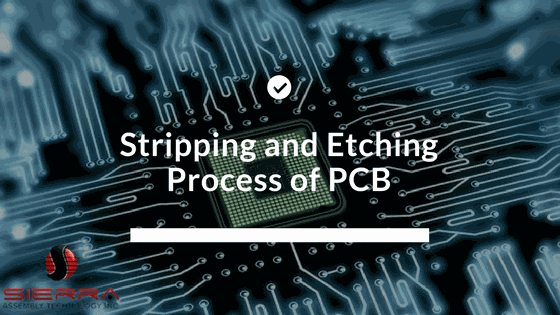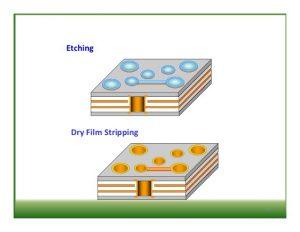Subscribe to get the latest news and updates. No span, we promise.



Most of us must have heard about the Printed Circuit Board (PCB) design process. But very few are aware about the details. This post will put some light upon various stages in the PCB design process, but will focus more on the stripping and etching process of a PCB.
As the manufacturer changes, the way of designing PCBs also vary. Thus, PCBs can be designed in a number of different ways. PCBs can be manufactured in bulk quantities with the help of various machines available in the manufacturing industries. The main processes involved are:
Highly automated machines with high precision are used to carry out the aforementioned processes. Designing a high quality PCB requires latest equipment and machinery. Some of the key equipment include:
While making PCBs, a layer of copper is added on the substrate. Sometimes, both the sides of the substrate are covered with copper layers. PCB etching process is carried out to get rid of the excessive copper, and only the required copper traces are left behind after the etching process.
The etching process can be carried out in a number of ways. However, the most commonly used method for etching is by using hydrochloric acid or ferric chloride. Both the chemicals are plentiful and economical.The main purpose of the PCB etching process is to trace the circuit design on a copper plate. To do this, there are several steps that you need to follow, which are as follows:
Step 1: The very first step of the etching process is designing the circuit, using the software of your choice. Once the design is ready, flip it, and then get it printed.
Step 2:On the transfer paper, print the circuit design. Make sure that the design is printed on the shiny side of the paper.
Step 3: Now, take the copper plate, and rub sand paper on it. This will make the surface of copper rough, and thus helps it to hold the design efficiently. There are certain points to remember step 3 till the last step:
Step 4: Now, wash the plate by some rubbing alcohol and water, so that any small particles of copper that get removed from the surface during sanding are washed off. Allow the plate to dry after washing.
Step 5: Cut the printed design properly, and place them on the copper plate facing down.
Step 6: The copper plate is now passed through the laminator several times until the plate gets heated.
Step 7: Take the plate out from the laminator, after it is hot, and hold it in a cold bath. Agitate the plate so that all the paper comes off and floats on the water. You will see a traced circuit in black on the copper plate.
Step 8: Now take the board out of the bath, and place it in the etching solution. Agitate the copper plate for around 30 minutes. Ensure that all the copper around the design is dissolved.
Step 9: Take out the copper plate and wash it in the water bath again. Keep it to dry. Once it has dried completely, you can use rubbing alcohol to remove the ink transferred to the printed circuit board.
Step 10: This completes the etching process of a printed circuit board. You can now drill the holes using proper tools with the required drill bit size.

Post etching process, the copper present on the PCB gets covered either by electroplated tin or tin/lead. You can use concentrated Nitric acid to remove the tin. Nitric acid is very effective in removing tin, and does not damage the copper circuit tracks below the tin metal. Thus, now you have a clear distinct outline of copper on the PCB. The board can now be passed on to the next process.
Solder Resist
This is one of the most important processes in designing of a PCB. The areas on the circuit board that cannot be soldered are covered with a solder resist material. By doing this, it avoids the solder from forming traces, which can create shorts to nearby component leads.
PCB Testing
Once the circuit board is manufactured, the next step is testing. This checks whether the manufactured printed circuit board is working fine or is defect-free. Today, high volume PCBs are tested using a number of advanced testing equipment. Some of the equipment that are used today for testing the circuit boards are ATG test machines, which include fixtureless testers, and flying probes. They also have the capability of universal grid testing.
PCB Assembling
This is the final step, which includes assembling various electronic components in their right positions on the circuit board. PCB assembly can be carried out by either of the following methods:
The common factor in both the aforementioned technologies is that the leads of component are fixed electrically, as well as mechanically to the circuit board with the help of molten metal solder.
This is the entire process of designing a PCB. To know more, you can contact an experienced manufacturer like Sierra Assembly. The professionals at the company can guide you throughout the entire process